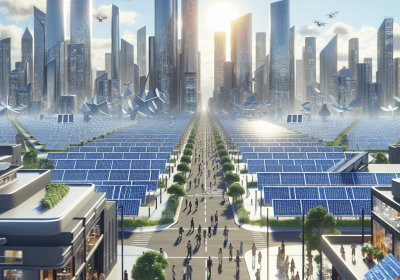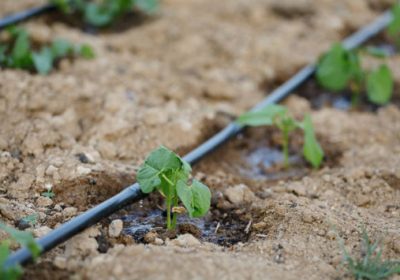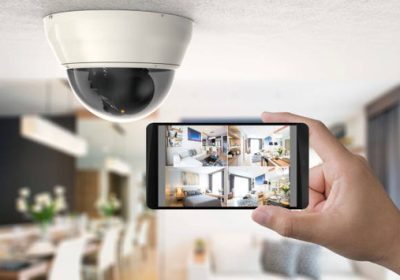Robotic Helpers: The Rise of Domestic Robots and Their Impact on Everyday Life

The past few years have witnessed a surge in the development of domestic robots, which are specifically designed to help individuals with various tasks in their homes. These robots, which come in various shapes and sizes, are programmed to perform specific tasks ranging from cleaning floors to cooking meals. The rise of domestic robots has brought about a revolution in the way individuals live, work, and interact with technology. In this article, we will examine the rise of domestic robots, their impact on everyday life, and what the future holds for these intelligent machines.
The Rise of Domestic Robots
The first domestic robot to hit the market was the Roomba, a robotic vacuum cleaner that was introduced by iRobot in 2002. The Roomba was a game-changer as it completely transformed the way people cleaned their homes. With the Roomba, individuals no longer needed to spend hours vacuuming their homes as the robot could do it for them. Over the years, the Roomba has become more advanced, and today’s models can map the layout of a room and navigate around obstacles. Other companies have followed suit, and there are now robotic vacuum cleaners from several manufacturers.
Apart from robotic vacuum cleaners, there are now robotic lawn mowers that can automatically mow lawns, robotic pool cleaners that can clean swimming pools, and robotic window cleaners that can clean windows in high-rise buildings. These robots have made it easier for individuals to maintain their homes, and they have freed up time that can be used for other activities.
In addition to these specialized robots, there are now general-purpose robots that can perform a wide range of tasks. For example, the Pepper robot is a humanoid robot that can interact with humans and provide information and entertainment. There are also robots like the Jibo, which is designed to be a social companion for individuals. These robots can converse with humans, tell jokes, and even dance.
The Impact of Domestic Robots on Everyday Life
The rise of domestic robots has had a significant impact on everyday life. These robots have made it easier for individuals to complete tasks that they would otherwise have to do themselves. For example, with a robotic vacuum cleaner, individuals can clean their floors without having to lift a finger. With a robotic lawn mower, individuals can maintain their lawns without having to spend hours pushing a traditional lawn mower. These robots have also made it easier for individuals with disabilities to complete tasks that they would otherwise have difficulty performing.
Domestic robots have also had an impact on the workforce. As more tasks become automated, there is less need for individuals to perform these tasks manually. For example, the rise of robotic vacuum cleaners has led to a decline in the number of individuals employed as cleaners. While this may seem like a negative impact, it is important to note that new industries are emerging to support the development and maintenance of these robots.
One of the most significant impacts of domestic robots is on mental health. Studies have shown that social robots like Pepper and Jibo can help reduce feelings of loneliness and depression in individuals. These robots can provide companionship, entertainment, and even therapy. For example, the Mabu robot is a healthcare robot designed to provide emotional support to individuals with chronic conditions like heart failure. The robot can monitor the individual’s health, provide reminders for medication and appointments, and even engage in conversation.
The Future of Domestic Robots
The future of domestic robots is bright. As technology advances, robots will become even more intelligent and capable. It is likely that robots will become more specialized, with robots designed specifically for tasks like cooking, cleaning, and laundry. There may also be an increase in robots designed to help individuals with specific needs, like the elderly or individuals with disabilities.
One area where domestic robots may have a significant impact is in healthcare. With an aging population, there is a growing need for healthcare services.
Domestic robots can help meet this need by providing support to individuals with chronic conditions or those who require assistance with daily tasks. For example, the GiraffPlus robot is a healthcare robot that can monitor an individual’s vital signs, detect falls, and provide reminders for medication and appointments. Another example is the ZoraBots robot, which is used in nursing homes to provide entertainment and socialization for residents.
Another area where domestic robots may have a significant impact is in education. With the rise of e-learning, robots may become important tools for teaching and learning. For example, a robot could be used to provide personalized tutoring to students, or to help teach children with learning disabilities. There are already robots being used in classrooms to help teach children programming and robotics.
However, as with any new technology, there are also concerns about the impact of domestic robots. One concern is the potential loss of jobs as more tasks become automated. It is important to ensure that individuals are trained for the jobs of the future and that there is support available for those who may be impacted by job loss.
Another concern is the potential for robots to be used for malicious purposes. For example, a robot could be used to spy on individuals or to cause harm. It is important that there are regulations in place to ensure that robots are used for ethical purposes and that they do not infringe on individuals’ privacy or safety.
The development of domestic robots is still in its early stages, and there is much potential for innovation and growth in this field. One area that is ripe for development is the integration of artificial intelligence (AI) into domestic robots. AI can enable robots to learn from their interactions with humans and their environments, which can help them become more intelligent and better at performing tasks. This could lead to the development of more autonomous robots that can operate without human intervention.
Another area of potential growth is the development of robots that can perform tasks that are currently difficult or impossible for humans to perform. For example, a robot could be designed to clean the inside of an airplane wing, which is a task that is currently performed manually and is both difficult and dangerous. There are also opportunities to develop robots that can operate in extreme environments, such as underwater or in space.
The development of domestic robots also presents opportunities for entrepreneurs and startups. As the market for domestic robots grows, there will be opportunities for companies to develop new products and services that cater to this market. For example, there may be opportunities to develop apps or software that enable users to control their robots remotely or to access data collected by their robots.
Overall, the potential for domestic robots is vast, and the impact they could have on society is significant. The rise of domestic robots could revolutionize the way we live, work, and interact with each other. They have the potential to transform the way we approach household tasks, provide care for individuals with chronic conditions, and even help to educate our children.
However, there are also challenges that must be addressed as this technology continues to advance. As previously mentioned, there are concerns about job loss and the ethical implications of using robots. It is important that we as a society work together to ensure that we address these challenges in a responsible and ethical way.
In addition to addressing these challenges, it is also important to promote awareness and understanding of this technology. Many people may be skeptical or even fearful of the rise of domestic robots, and it is important to address these concerns through education and outreach. By promoting awareness and understanding, we can help to ensure that this technology is adopted in a way that benefits society as a whole.
Conclusion:
In conclusion, the rise of domestic robots is a significant development in the field of robotics and has the potential to revolutionize the way we live our lives. While there are challenges and concerns that must be addressed, the potential benefits of this technology are vast. It is important that we work together to ensure that the development and adoption of domestic robots is done in a responsible and ethical way, and that we continue to promote awareness and understanding of this technology. With careful planning and responsible implementation, domestic robots have the potential to improve our lives in countless ways.









